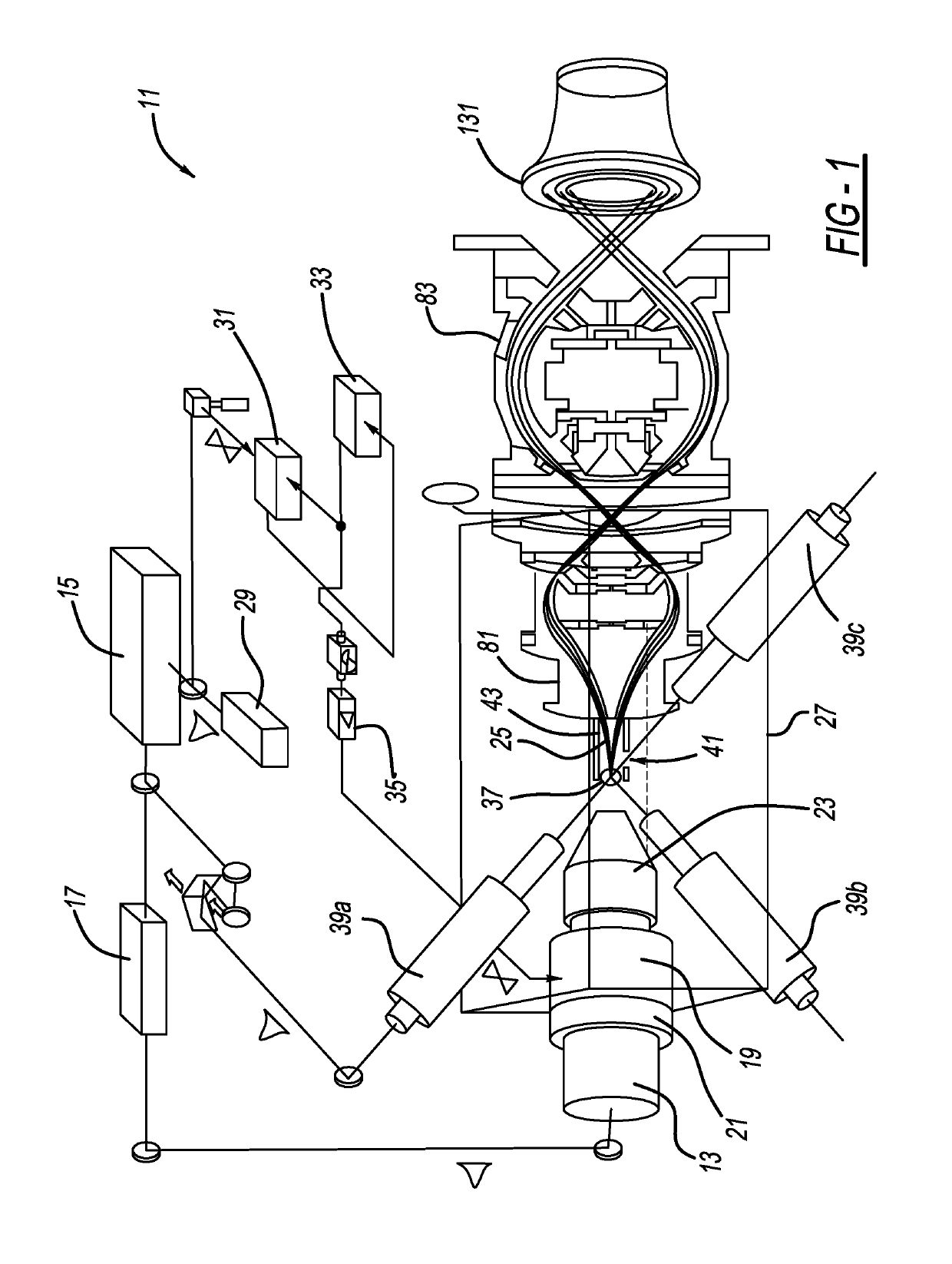Electron spectroscopy system
a technology of electron spectroscopy and system, applied in the field of electron spectroscopy, can solve the problems of exacerbated traditional shortcomings in resolving these processes, difficult to obtain information, and inability to successfully develop advanced predictive models, so as to improve the time and energy resolution of the microscope and the detail of the image created. , to achieve the effect of improving the resolution of time and energy and improving the quality of the imag
- Summary
- Abstract
- Description
- Claims
- Application Information
AI Technical Summary
Benefits of technology
Problems solved by technology
Method used
Image
Examples
first embodiment
[0026]an electron spectroscopy system 11 is shown in FIGS. 1 and 2. System 11 includes a femtosecond photoelectron gun 13, which is driven by a fs laser 15 and harmonic generator pulse shaper 17 for high-brightness beam generation. System 11 further includes an energy-compression radio frequency (“RF”) cavity 19. RF cavity 19 is coupled to gun 13 through mode-matching optics 21 and an energy filter 23 to produce and emit monochromatic electron beams 25, containing a bunch of electrons in each pulse or shot, for the spectroscopy process in a vacuum chamber 27.
[0027]System 11 also includes a seed fs oscillator 29, a phase-lock loop 31, a master RF clock 33 and an RF amplifier 35. Laser pulses of 1 ps or less are preferred for sending to gun 13 and also to a specimen or sample 37. Even more preferable, 100 fs or less duration laser pulses are employed. The laser pulses are emitted from any one or more of time-resolved optical pumping members 39a, 39b and / or 39c, members 39b and 39c bei...
second embodiment
[0047]the present electron spectroscopy system 201 is disclosed in FIGS. 6-13. System 201 includes adaptive electron-optics in an electron microscope 203 aiming to boost a signal-to-noise ratio (“S / N”) while maintaining high energy and time resolutions in a few-electron pulse UEM system. A pair of longitudinal electron lenses or RF cavities 19 and 207 control the pulsed electron beams, resulting in favorable phase space evolution to improve resolutions and overcome space-charge limitations. Transverse magnetic lenses 49, 209, 211, 212 and 213 are also part of the TEM. Magnetic lens 49 is proximity-coupled to gun 13 to more easily control the incidence beam divergence angle for the subsequent lenses. Moreover, magnetic lenses 211 and 212 form the objective lens system. Lens 211 helps control the dose of the electron beam on the specimen, while lens 212, coupled with lens 213, controls magnification for image projecting. An omega filter type of spectrometer analyzer 221 is in the TEM ...
PUM
 Login to View More
Login to View More Abstract
Description
Claims
Application Information
 Login to View More
Login to View More - R&D
- Intellectual Property
- Life Sciences
- Materials
- Tech Scout
- Unparalleled Data Quality
- Higher Quality Content
- 60% Fewer Hallucinations
Browse by: Latest US Patents, China's latest patents, Technical Efficacy Thesaurus, Application Domain, Technology Topic, Popular Technical Reports.
© 2025 PatSnap. All rights reserved.Legal|Privacy policy|Modern Slavery Act Transparency Statement|Sitemap|About US| Contact US: help@patsnap.com



